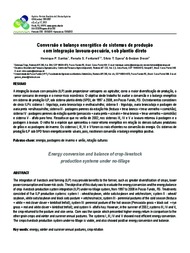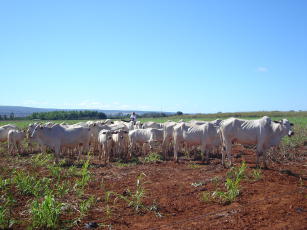Conversão e balanço energético de sistemas de produção com integração lavoura-pecuária, sob plantio direto.
Author(s): SANTOS, H. P. dos; FONTANELI, R. S.; SPERA, S. T.; DREON, G.
Publication year: 2013
Types of publication: Journal article
Unit: Embrapa Wheat


